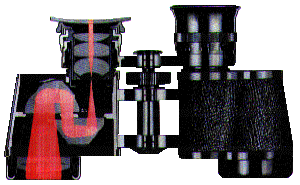 When you think of amateur astronomy or stargazing you automatically think that you will need to buy a telescope. But this isn’t necessarily true. A good quality telescope is expensive and can be hard to use effectively, especially if you’re the type of person who has trouble keeping your hands steady. You can use a stand but that’s more expense.
When you think of amateur astronomy or stargazing you automatically think that you will need to buy a telescope. But this isn’t necessarily true. A good quality telescope is expensive and can be hard to use effectively, especially if you’re the type of person who has trouble keeping your hands steady. You can use a stand but that’s more expense.
Kids especially have trouble with large, bulky telescopes. Forget about cheap telescopes, as these tend to produce dim images and false colors.
A better and more affordable choice may a pair of binoculars. These are generally cheaper than most telescopes and more suited to the inexperienced astronomer. They are perfect for kids starting out, who may (but hopefully not!) lose interest.
Because binoculars are light they are easier to keep steady, and you can also stabilize them by holding them with both hands. As you can use both eyes, there is no annoying, having-to-close-one-eye situation. The field of view is wide, and the image isn’t inverted as with telescopes, making it much easier for you to find that elusive star you’re searching for.
Of course you can keep your binoculars around your neck on a strap, so there’s no chance of dropping them. They are also a versatile tool, and you can use them for bird watching, checking out natural and human-made landmarks, and many others things.
Before you buy your binoculars you need to know a few things about how they work. Price isn’t the only thing to consider. The most important feature of your binoculars is the aperture of your front lenses. The larger the diameter of the aperture, the more light can be received, providing a brighter image, which is essential for discerning dim celestial objects. To be effective for stargazing your binoculars need to have an aperture with a diameter 40 mm or larger.
To determine the aperture’s diameter look for two numbers that should be visible on the binoculars, such as 10×40, where 40 is the diameter of the aperture and 10 is the magnification. You don’t want a magnification greater than 10, as the binoculars will be too heavy to hold steady. But a magnification of less than 7 isn’t effective for stargazing.
The exit pupil is another essential feature of the binoculars. This refers to the width of the beam of light leaving the eyepiece. To calculate the exit pupil divide the diameter of the aperture by the magnification. So, in the above example of 10×40 the exit pupil is 40/10 = 4mm.
When our eyes adapt to the dark, the pupils dilate to receive more light. But as we grow older, the ability of our eyes to make these adjustments decreases. People older than 40 can only dilate their pupils to around 5 mm, which means the exit pupil on the binoculars needs to match this. For younger people the dilation is around 6-7.
You also need to consider the field of view, which is imprinted on the binoculars. The field of view is expressed as degrees or as a number of feet at 1,000 yards. To convert to degrees divide the number of feet by 52.5. For example if the number of feet is 350: 350/52.5 = 6.7°. It’s common for binoculars to have a field of view in the range of 6-7°.
Binoculars use a number of prisms to manipulate the light path to obtain an image the right way up. There are two types of prism: roof and porro. Roof-prism binoculars have straight barrels, resulting in a compact size, but these are often more costly and the images they produce are a little dim for stargazing. The porro-prism models are zigzag-shaped, and are more heavy and bulky than roof-prism binoculars.

The type of lens glass is important too. The more expensive borosilicate provides a better quality image than the cheaper barium crown glass. A larger number of coatings on the glass will increase the brightness and contrast of the images.
On most binoculars the central focusing knob allows you to adjust both eyepieces simultaneously. You should focus using this first. Some models allow you to then focus one eyepiece only, which can be advantage when passing the binoculars from person to person. Other models let you focus both eyepieces separately, which is a distinct advantage if your eyes are different in focal length as many people’s are. These models tend to be more expensive, but they also protect against moisture, which is especially important in humid climates.
Binoculars are effective in showing details on the Moon, clearly showing its mountains, valley and craters. The other planets in the Solar System can be seen clearly, particularly Mars, Venus and Jupiter. You can even follow the orbits of the Jovian moons. The wide field of view is suited to observing a long object such as a comet.
Away from the Solar System, binoculars are good at picking up large star clusters, such as Pleiades in the constellation Taurus or Omega Centauri in Centaurus, which telescopes with their narrower fields of view cannot show so well. You can also see other galaxies such as our nearest neighbor, Andromeda.
A good pair of binoculars is an effective, low-cost means of opening up your vision and your mind to the Universe. So what are you waiting for?


